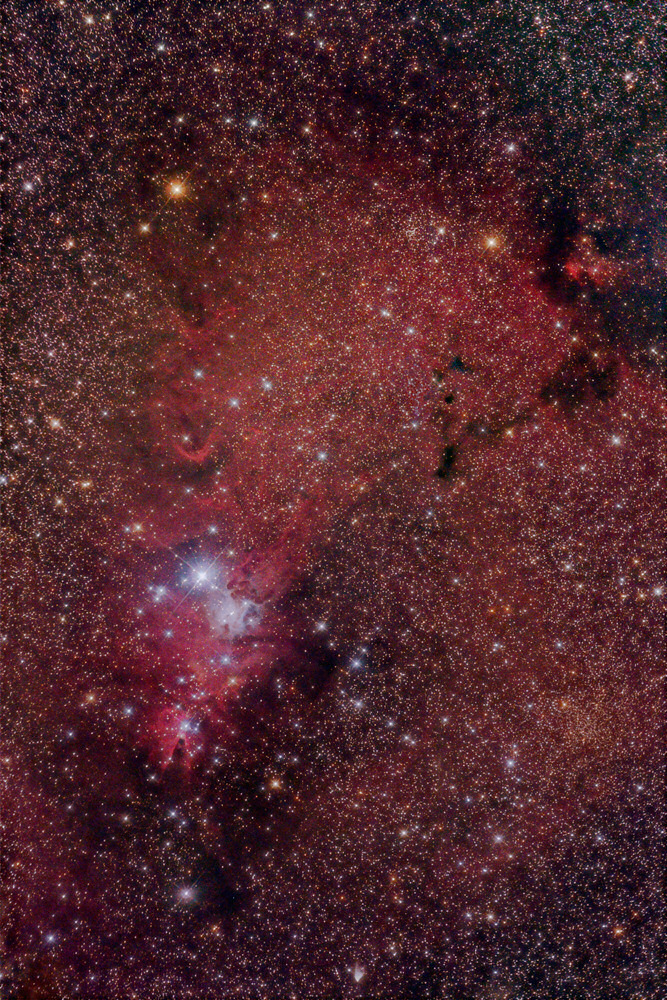
This image covers NGC 2264, a giant region of ionized hydrogen in Monoceros. The bright 5th magnitude star on the left side of this frame is S Monocerotis, it forms the base of the so-called Christmas Tree Cluster. The shape of this star cluster resembles a conifer, it is outlined by a dozen or so 7th magnitude stars and "stands" upside down, the tip being the 6th magnitude star at the apex of the "Cone Nebula", which is the designation of the dark nebula which protrudes into the southern end of the red emission area. The nebula itself shows a mixture of red and blue colors, the red ones indicating hydrogen emission and the blue parts indicating starlight reflected by the nebula's dust particles. There is also lots of substructure in the nebula, in some areas dark nebulae form intrusions into the red background nebulosity.
The Cone Nebula and the Christmas Tree Cluster were discovered by William Herschel in 1783.
Near the lower edge of this frame NGC 2261, Hubble's Variable Nebula, can be seen as fan-like extension of the variable star R Monocerotis pointing upwards. The nebula itself also varies to the point that photographs made several weeks apart show significant structural changes in the nebulosity.
 Northern Monoceros, standard lens photograph.
Northern Monoceros, standard lens photograph.
 Gemini, zoom lens photograph
Gemini, zoom lens photograph
 Part of NGC 2264 - Cone Nebula Region, Newtonian photograph
Part of NGC 2264 - Cone Nebula Region, Newtonian photograph
Exposure Data